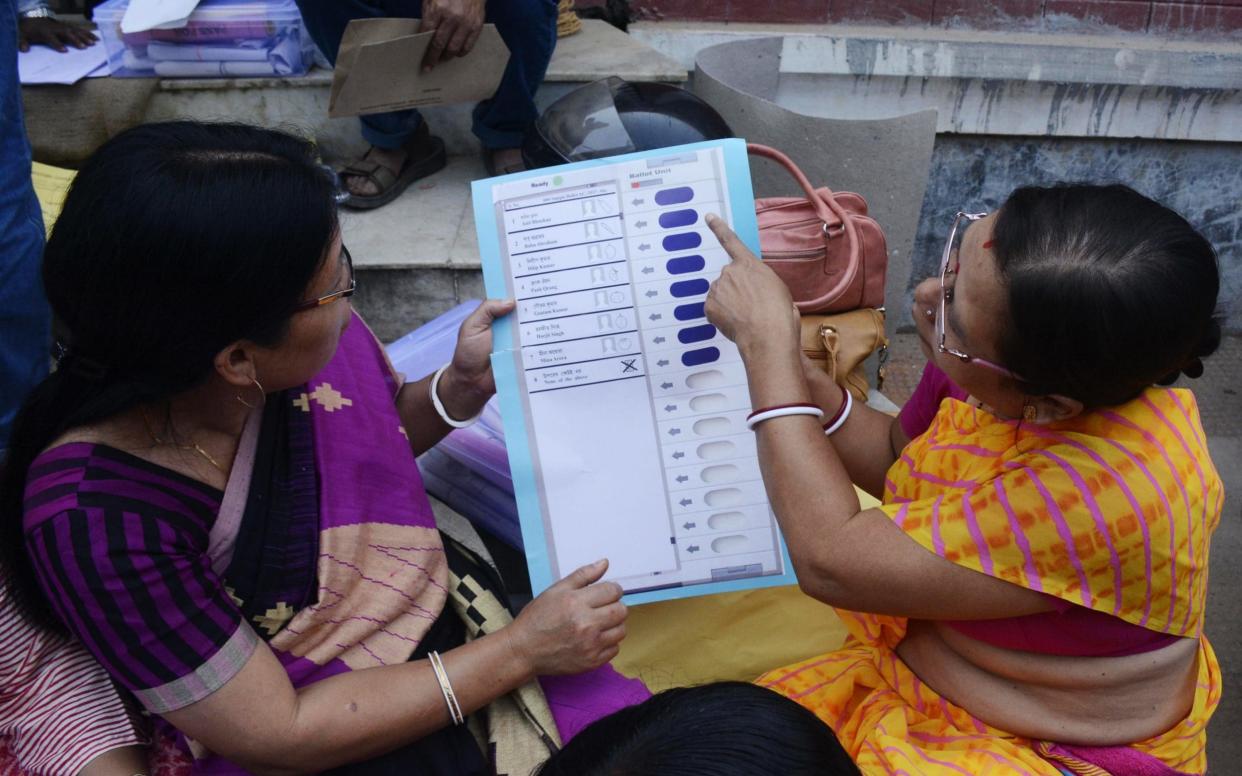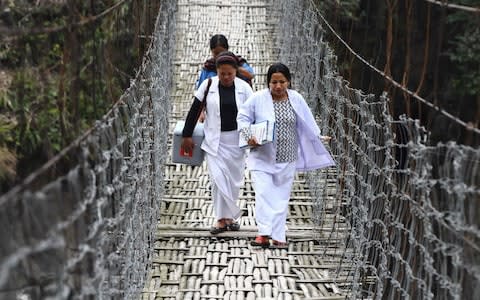Indian electoral staff to hike for a day through mountains to ensure single voter can cast her ballot

Staff from the Indian Election Commission will hike for a whole day across rugged mountainous terrain in the northeastern Arunachal Pradesh state to ensure that a single voter can cast her ballot in next month’s polls.
Commission officials said it will dispatch 10 polling officers, security personnel and porters, who will likely take 11 hours to reach Malogam village, 24 miles from the nearest road head, to enable Sokela Tayang to vote in the parliamentary and provincial elections on 11 April.
The 39-year old housewife lives with her three children in the remote mountain village bordering Tibet, over 300 miles north of the state capital Itanagar.
“Officials will need to man the polling booth from 7am till 5pm on voting day, as we don’t know when Sokela will come and vote” said deputy chief electoral officer Liken Koyu.
She cannot be forced to cast her vote early, he added. During the previous 2014 parliamentary elections the same Malogam polling booth had two voters, including Ms Tayang.
However, her husband recently transferred his name to another polling booth in the same constituency, and Ms Tayang is the solitary voter.

Arunachal Pradesh has a high rate of sparsely used polling booths - seven of its 2,202 polling stations, have fewer than 10 voters.
It also has 518 polling booths where voters have to trek over 30 miles in order to cast their ballot. In some instances this means at least two days of walking to reach them, officials said.
Ranikor and South Tora, south of the state capital Shillong are connected to the rest of the province by narrow dirt tracks and pathways while mobile telephone connectivity to both constituencies is poor.
Officials said several runners, hired for a "modest honorarium" have been assigned the task of jogging in relays to carry messages to and from the commission.
Both assembly constituencies had the best long distance runners in the region as their remoteness forced locals to travel to nearby towns on foot.
Message runners in India date back to the advent of Mughal rule in the 16th and 17th centuries, when they were used to gather and disseminate intelligence, convey important messages and were employed by merchants to execute commercial dealings.
India’s British Colonial rulers who followed the Mughals two centuries later expanded their role, using them to distribute mail and other packages across the country.
Mail runners became redundant in India in the late 19th and early 20th centuries after the spread of the railways, except for some remote Himalayan regions where connectivity still remains inadequate.

 Yahoo News
Yahoo News 
